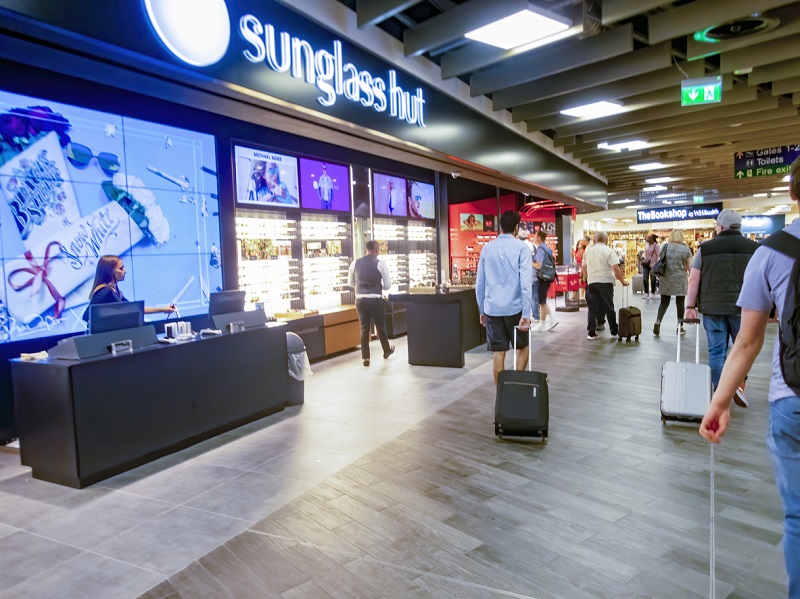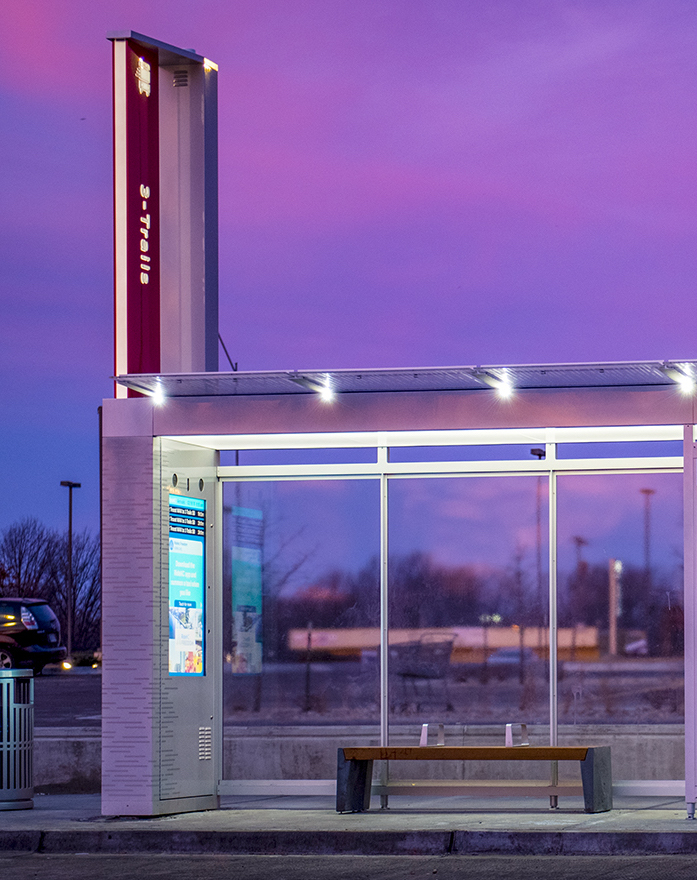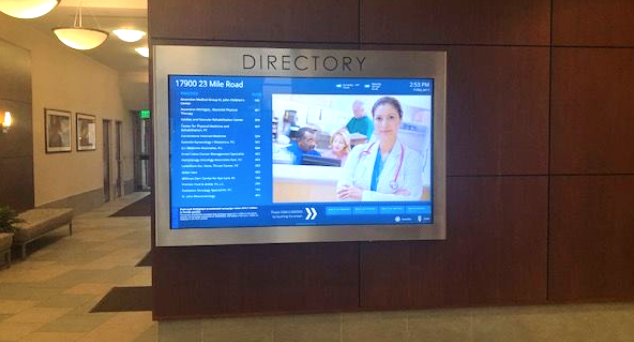Digital signage has become a part of everyday life for most people, simplifying everything from buying a ticket or finding their way in a new environment, to providing an entertaining break from reality via interactive games. Below are some of the benefits of commercial digital signage displays and how they can enhance user experience at malls, in “smart cities,” at hospitals, or even while waiting at the bank.
What is a Commercial Signage Display?
A commercial signage display refers to any display that is intended for use in a commercial environment. They are generally used to communicate with consumers or educate them on any number of topics, from public health information to new product launches from various brands and companies.
More complex commercial signage displays are sophisticated enough that they have been built and programmed to grab their audience’s attention with interactive games , some even utilizing augmented reality, that double as promotions. There are even digital displays that are integrated with various components to allow transactions, such as purchasing and payments or dispensing of goods.
Why is Commercial Digital Signage Important?
Digital signage is important as it can be a powerful tool in influencing consumer behavior. When utilized well, it can enhance brand perception and awareness, increase sales of products or services, and assist with various tasks such as wayfinding and navigation when placed in environments such as malls, transportation hubs, or “smart city” centers.
Additionally, commercial digital signage is built to be durable, and can be utilized both indoors and outdoors, depending on the model chosen. This means it can withstand extremes in temperatures, as well as wind, rain and snow. It is also easy to update frequently, or whenever needed, as these tools are accessed remotely via Cloud servers, and available 24/7.
10 Examples of Commercial Digital Signage
Commercial digital signage is attractive and highly-visible, making it an excellent way to promote multiple products, companies, brands or services, while also providing utility for the end-user, whether to communicate important information or provide wayfinding assistance. Here are some examples of industries that utilize commercial signage.
Malls
Malls implement commercial digital signage for wayfinding, brand awareness, and digital directory purposes. Malls use large digital signage displays to attract visitors as well as provide wayfinding solutions to familiarize them with space. In addition to wayfinding, these displays double as high-tech billboards that showcase a rotating stream of the mall’s current stores, sales and products to those passing by.
Airports
Airports employ digital signage in multiple ways to assist travelers when visiting the airport. The first role of digital signage is to provide a directory and map of the airport. Displays also display flight information, including updates on delays of incoming or outgoing flights, arrivals, and departures, as well as baggage claim information.

They are also useful at security checkpoints and customs to provide step by step illustrations that help expedite the process by ensuring that passengers have the documentation needed ready, and have prepared themselves appropriately for metal detectors, luggage scanners, or customs agents.
need to empty their pockets beforehand and remove their shoes to expedite the process. Lastly, digital signage can display entertainment, such as trivia, weather, local area information, and news to help passengers pass the time before or between flights more comfortably.
Supermarkets
Supermarkets use digital signage to help promote new products, as well as item-specific sales. This can help increases sales of the new items, or move older products out more quickly in order to make space for others. These displays and kiosks are also able to be built with components that allow them to scan QR codes and print the corresponding coupons or loyalty rewards offers.
Bus Stops
Bus stops employ commercial digital signage displays to provide accurate updates on bus schedules. In addition to providing real-time departure and arrival information, these displays provide an attractive area for advertisements that can reach a wide audience of visitors. Besides advertisements, these displays can also provide local news, weather updates, and area information, helping to occupy and entertain those waiting for the bus to arrive.

City Centers
Many city centers -- often known as “smart cities” -- utilize digital billboards to promote a wide range of products. Because they see a large number of visitors daily with varying tastes, flexible ad space is a must for these environments. Digital signage displays fill this role by promoting a wider variety of products and services, increasing the chances that what is shown is relevant to a larger number of people. Additionally, they can also provide information on city-wide events, alongside important news and updates.
Healthcare Facilities
Healthcare facilities such as hospitals employ digital signage to assist patients and visitors. Hospital waiting rooms are one example. These often utilize digital displays to provide up to date information about the facilities and wait times, as well as entertainment to help provide a distraction to patients and families while they wait.
These displays are also useful for helping visitors find their way around the facility with maps and interactive navigation. Lastly, these displays provide an attractive ad space, allowing the hospital to promote departments, like medical specialties, and services, like gifts shops and cafeterias.

Sports Stadiums and Concert Venues
A prime example of commercial outdoor digital signage is that which is used by many open-air sports and concert venues. Besides displaying information about the game, such as penalties and points, or close-up concert footage that ensures every seat in the house is a good one, these massive screens are also used to convey a wide array of useful information to guests.
They can also display player updates and statistics, information on upcoming games, ticket specials and sports news. These displays are also handy for displaying information about many of the food vendors at the stadium, advertising for businesses large and small, and promoting merchandise for sale from a wide variety of vendors.
Movie Theaters
Large displays at movie theaters are used to showcase new and upcoming releases, as well as display concession menus and ticket specials. Most are also located inside of the theater, but they are sometimes used outside of the theater as well. These displays are often located near the concession counter, using eye-catching animations and videos to promote various food items and make them more enticing to customers.
Banks
Banks utilize digital signage displays to shorten perceived wait times by providing a more engaging experience for their customers. Lines at the bank typically are quite monotonous and tedious, so these displays provide information and sometimes entertainment to ensure that guests are kept better occupied while they wait.
Some banks will display local news, sporting events or weather updates as well. Lastly, these displays will often promote bank services and other available offers.
Museums
Commercial signage displays are a great asset to museums. As museums tend to be large and house multiple exhibits, easy to use and access navigation and wayfinding assistance are a crucial part of a positive visitor experience. These displays provide digital directories for easy navigation, and often offer interactive maps, too. These displays can also be integrated into exhibits, creating more opportunities to interact with and engage guests.
These displays can also be used to showcase promotions like museum membership programs, menu items for the cafe, or specials in the gift shop. Lastly, they can display featured or prominent donors, honoring them for contributions to the museum while encouraging visitors to consider doing the same.
Commercial digital signage provides an essential asset to multiple industries. To learn more about digital signage, visit Redyref today.



